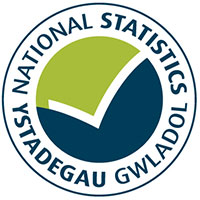In the April 2016 to March 2017 National Survey, people were asked whether they had a long-term health condition which reduced their ability to carry out day–to-day activities.
This is the latest release
For this report, an adult is defined as ‘disabled’ if they have such a condition. In the survey these people were then asked about their use of various types of public transport. They were also asked about any difficulties faced when accessing public buildings, offices, shops, schools and people’s homes.
Main points
- A taxi was the mode of public transport most likely to have been used. 44% of disabled people had used a taxi in the previous year, compared with 16% who had used a coach.
- By far, the most common reason given for not using public transport was ‘not needing or wanting to’. The second most common reason given for not travelling by local buses or local trains was the transport not being available, while cost was the second most common reason for not travelling by taxi or a long-distance train.
- The majority of disabled people said that they never had difficulty, going into, moving around or using facilities in a building.
- Shops were the most commonly-reported type of building that people had difficulty accessing and using, reported by 45% of those who had difficulties.
- This was followed closely by hospitals, which was reported by 38%.
- 41% of those who had difficulty accessing a building, said their difficulty related to ‘moving around the building’. 25% reported ‘parking problems’ as their difficulty and 22% inadequate lifts and inadequate toilet facilities
Reports

Barriers faced by disabled people (National Survey for Wales), April 2016 to March 2017 , file type: PDF, file size: 895 KB
Contact
Siobhan Evans
Telephone: 0300 025 6685
Email: surveys@gov.wales
Rydym yn croesawu galwadau a gohebiaeth yn Gymraeg / We welcome calls and correspondence in Welsh.
Media
Telephone: 0300 025 8099
Rydym yn croesawu galwadau yn Gymraeg / We welcome calls in Welsh.

